Japan Wireless and NINJA WiFi Compared: Pros, Cons, and Insights

Japan Wireless and NINJA WiFi are both popular pocket WiFi options for traveling in Japan. In this review, MATCHA compares the two services based on the ease of pick up and return, communication speed, battery life, usability, and more. Take a look and choose the best one for you!
Japan Wireless or NINJA WiFi: Which to Choose?
If you are planning a trip to Japan, you may consider using pocket WiFi. In terms of internet services for travel in Japan, eSIM has gained popularity in recent years, but pocket WiFi offers several advantages, such as:
- No need for cumbersome procedures like APN settings
- Ability to use large amounts of data
- Reduces smartphone power consumption
Currently, the most popular options are Japan Wireless and NINJA WiFi.
In January 2025, we tried both services and compared their usability and communication speeds. If you are unsure which to choose, please refer to this comparison.
Japan Wireless or NINJA WiFi in Comparison
1. Service Providers
2. Comparison of Plans and Prices
3. Pick-up Locations
4. Included Items and Usability
5. Communication Speed / Battery Life
6. Ease of Return
7. Conclusion: Overall, NINJA WiFi is Easier to Use
Comparison of NINJA WiFi and Japan Wireless
- Operating Company
- Plans
- Pricing
- Pickup
- Included Items
- Communication Speed
- Ease of Return
| Service | NINJA WiFi | Japan Wireless |
|
|
Vision | Inbound Platform |
|
|
Daily plans of 1, 3, 5, and 10 GB / Unlimited plan available | Only unlimited plan available |
|
|
Daily 1-10 GB plans are the cheapest. Unlimited plans are among the lowest in Japan | Unlimited plan is slightly cheaper than NINJA WiFi |
|
|
Dedicated counter at the airport | Shared counter with other companies |
|
|
Rich selection of coupons | No coupons |
|
|
Comfortable even with 5 PCs | Comfortable even with 5 PCs |
|
|
Return box at the airport, delivery via convenience store is possible | Mail-in only |
Now, let's take a closer look at the details.
Service Providers
Key Points: NINJA WiFi is a long-established player in the internet sector. Japan Wireless operates a variety of services aimed at foreign visitors to Japan.
NINJA WiFi is a service provided by Vision Inc., which was founded in 1995.
Vision is a major Japanese internet company listed on the Tokyo Stock Exchange Prime Market. The company offers a variety of internet services, including pocket WiFi, eSIM, and fixed communications, under the Global WiFi brand.
On the other hand, Japan Wireless is operated by Inbound Platform Inc., which was established in 2015. This company is also listed on the Tokyo Stock Exchange Growth Market.
In addition to WiFi and eSIM services, they are involved in a camper rental business aimed at inbound tourists.
Both companies are reliable in terms of trustworthiness.
Comparison of Plans and Prices
Key Points: NINJA WiFi offers a variety of plans with a cost-effective 10GB daily option. For completely unlimited use, Japan Wireless is slightly cheaper.
Both companies provide services with distinct features.
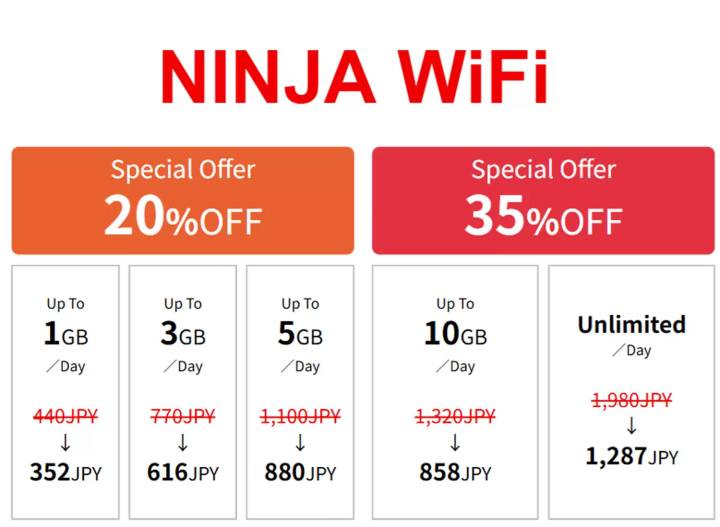
NINJA WiFi offers a range of plans based on daily data usage, including options of 3GB to 10GB and unlimited plans.
MATCHA provides a 35% discount for the 10GB and unlimited plans, and a 20% discount for the 3GB and 5GB daily plans.
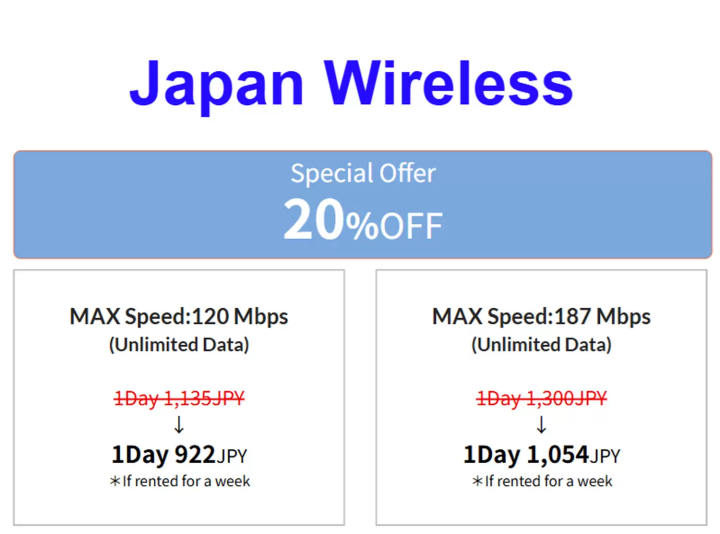
On the other hand, Japan Wireless offers a unique plan that distinguishes between maximum speeds of 120Mbps and 187Mbps. MATCHA provides a 20% discount for Japan Wireless.
Comparing the two, NINJA WiFi is significantly more affordable for around 10GB of usage, while Japan Wireless is more advantageous for completely unlimited plans.
Now, regarding which is better between the 10GB and completely unlimited options, it is rare to actually use more than 10GB of data in a single day.
Below are the typical data consumption amounts for common activities. With 10GB available per day, it is possible to stream moderately high-quality videos throughout the day.
Estimated data usage in Japan (what you can do with 1 GB):
Sending emails: approximately 2,090 emails (assuming each email is about 500 KB)
Video streaming: Approximately 2 hours for a 480p (medium quality) video, or about 3 hours for a 360p video.
Google Maps: Approximately 1,432 views (assuming each view lasts for 10 minutes)
Reference: Wi-Fi Rental.com
Additionally, many hotels and facilities in Japan offer free WiFi. In particular, hotel WiFi is usually reliable, making it sufficient for transferring large data files.
Considering these factors, there are rarely situations that require more than 10GB of data.
However, if you need to download very large files multiple times while outdoors, having a completely unlimited option may provide more peace of mind.
Now, I would like to compare the two services based on actual usage.
Pick-up Methods
Key Points: NINJA WiFi is convenient as it has dedicated counters at many airports.
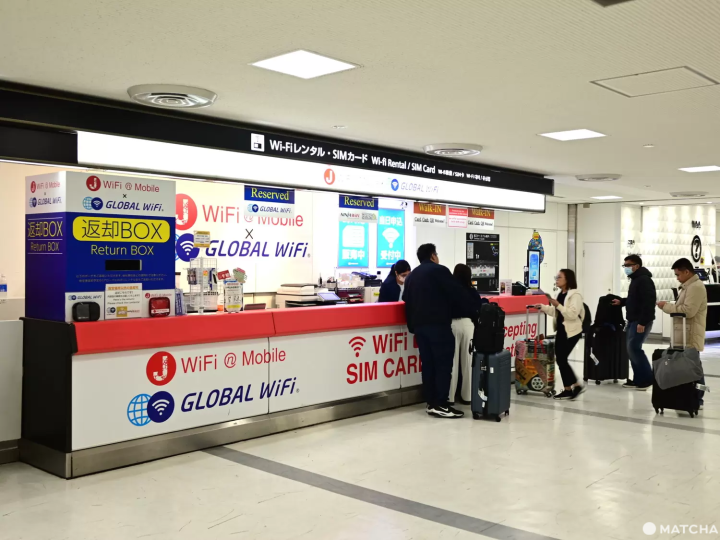
Many people will likely pick up their pocket WiFi at the airport. In this regard, NINJA WiFi has dedicated counters at most major airports in Japan, including Narita, Haneda, and Kansai.
For this review, I picked up both pocket WiFi devices at Terminal 2 of Narita Airport. There were dedicated staff available, so I felt secure knowing I could consult them immediately in case of any issues.
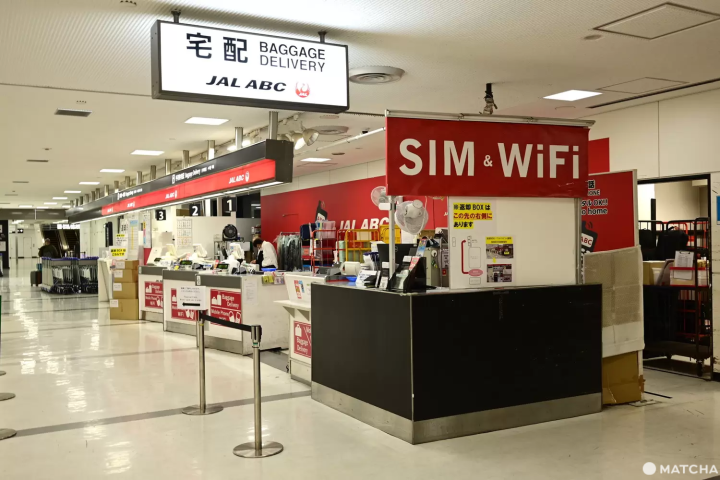
On the other hand, Japan Wireless does not have dedicated counters. You will need to pick it up at a post office located in the airport or at a shared counter with other companies (the photo shows the JAL ABC counter at Terminal 2 of Narita Airport).
If you choose Ninja WiFi, you can also book the Ninja WiFi with Welcome Suica (prepaid IC card for Japan public transportation) option, pick up them together at the airport counters, and take the train to start your journey right away. This means you won't need to wait in line to buy the Suica card.
If there are any issues, inquiries must be handled through email or other means. In terms of pickup, NINJA WiFi may offer a bit more peace of mind.
Included Items and Usability
Key Points: Both services are nearly equal; however, NINJA WiFi offers coupons.
Now, let's take a look at the contents of the rental kits and their usability.
Rental Kit Overview
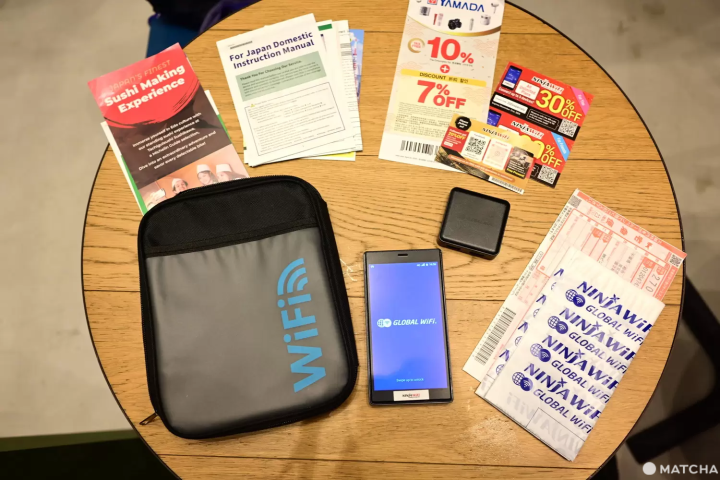
Here is the overview of the NINJA WiFi rental kit. It includes a router and charger, as well as a coupon for the Japanese electronics retailer Yamada Denki, along with various pamphlets.
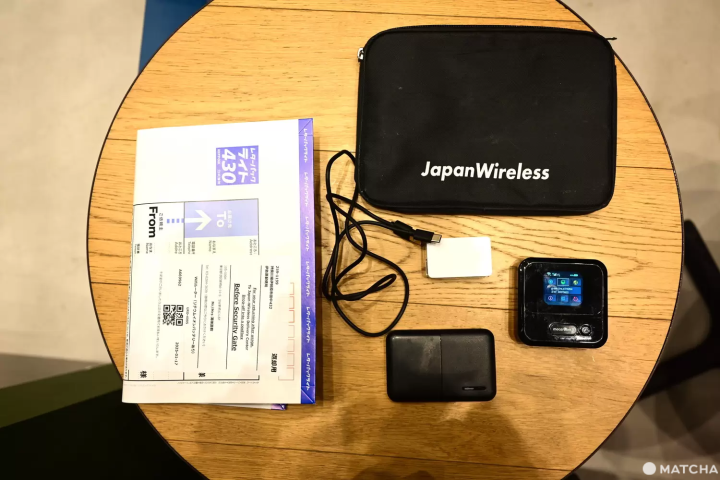
This is the overview of the Japan Wireless rental kit. It contains a router and a charger, among other items.
In terms of rental kit contents, it can be stated that NINJA WiFi offers a more comprehensive selection.
Router
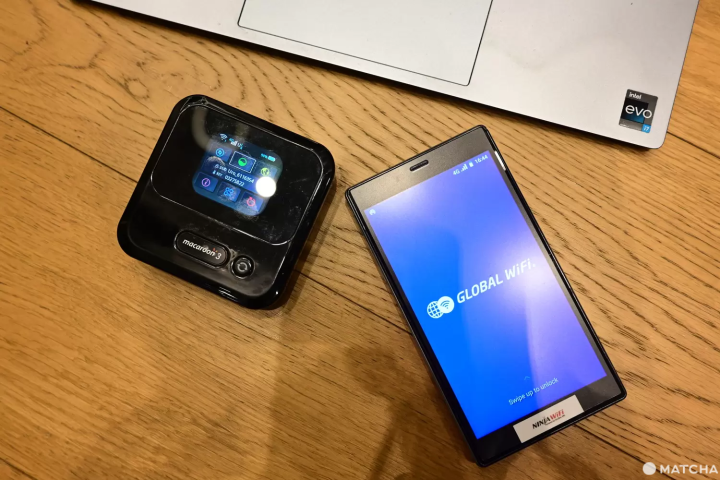
The NINJA WiFi router is larger than the Japan Wireless device but is thin and nearly the same size as a smartphone. In contrast, Japan Wireless is smaller but thicker.
Which one is easier to carry may depend on personal preference.
Functionality of the Operation Screen
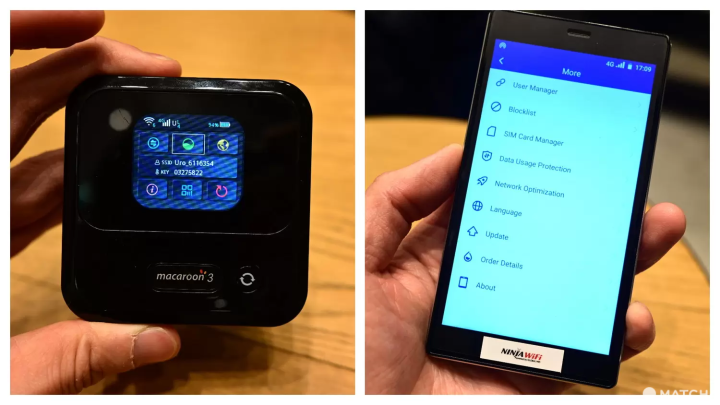
The operation screens of both devices look like this. There is no significant difference in terms of functionality.
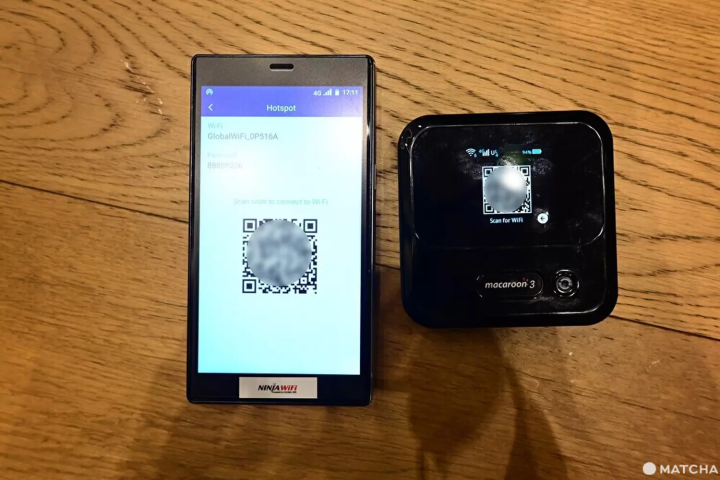
It's common to connect to pocket WiFi by entering a password from the WiFi settings screen.
However, with NINJA WiFi and Japan Wireless, you can connect to the internet simply by scanning the QR code displayed in the menu. This feature is very convenient when connecting with smartphones, so be sure to utilize it.
Communication Speed / Battery Life
Key Points: Both can function adequately even when connecting five PCs. The battery lasts for several hours.
In this review, I utilized the following plans at the MATCHA Tokyo office to test real-world usability.
NINJA WiFi: Infinite Unlimited Plan (SoftBank)
Japan Wireless: Premium WiFi (Unlimited Data, MAX Speed 187Mbps)

We connected five PCs to a single router simultaneously and used it for work over the course of one hour. For speed testing, we utilized the USEN Speed Test.
Japan Wireless
Date and Time: Measured from 14:00 to 15:00 on January 16
Average Speed: Download 18.24Mbps, Upload 7.97Mbps
Battery: 100% → 92%
NINJA WiFi
Date and Time: Measured from 15:00 to 16:00 on January 16
Average Speed: Download 12.88Mbps, Upload 4.19Mbps
Battery: 100% → approximately 85% (*This is an estimated value based on visual observation of the remaining battery icon)
Post-Usage Impressions: Connection is Smooth with NINJA WiFi. Is the Battery Better with Japan Wireless?
What surprised me during the use of both NINJA WiFi and Japan Wireless was that even with five PCs connected, the communication remained uninterrupted at any point.
That said, based on my experience, I felt that NINJA WiFi had a slightly smoother connection (although Japan Wireless had the faster speeds).
While using Japan Wireless, I noticed a tendency for image uploads to be somewhat slower. In contrast, with NINJA WiFi, there were no issues at all during online meetings, video streaming, or image uploads.
On the other hand, the battery life was slightly better with Japan Wireless. However, this might be attributed to the fact that I was engaged in more power-consuming activities such as online meetings and video streaming while using NINJA WiFi.
It's important to note that communication speeds can vary depending on the time of year and time of day (*). Additionally, battery life can differ among individual routers.
Taking this into consideration, the conclusion I can draw is that both NINJA WiFi and Japan Wireless are very reliable services in terms of connectivity and battery life.
(*) In fact, during tests at different times of the day, there were instances where NINJA WiFi had faster communication speeds.
Ease of Return
Key Points: NINJA WiFi has a return box, making it convenient.
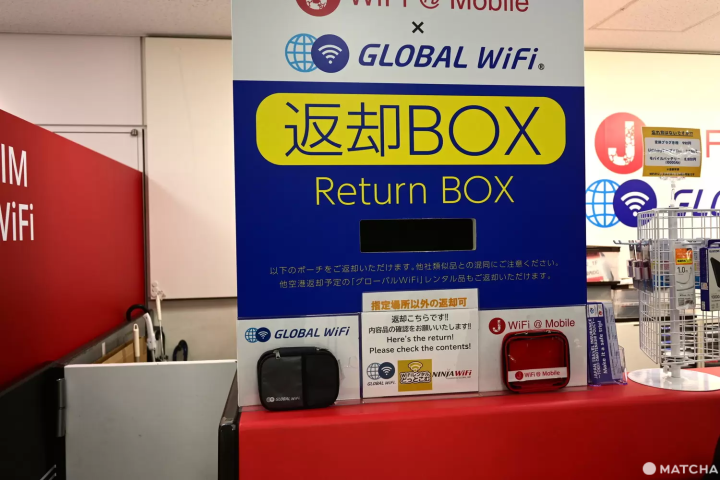
NINJA WiFi has established return boxes at many airports. You simply need to place the device in the box before your departure.
If you prefer to return it at a location other than the airport, you can place the device in the enclosed (*) delivery bag, attach the shipping label, and take it to a convenience store.
In Japan, there are usually convenience stores located very close to major train stations and airports, making this option quite convenient.
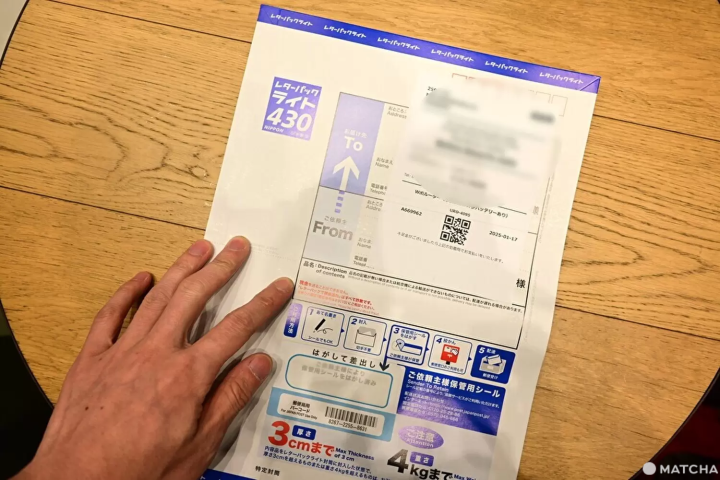
On the other hand, Japan Wireless includes a packing option for return shipping. You just need to put it in a mailbox.
Both methods are easy; however, NINJA WiFi, with its return boxes at airports, could be considered slightly more convenient since there is no need for packing or additional procedures.
Conclusion: Overall, NINJA WiFi is Easier to Use
From this comparison, it is clear that both services are very convenient and reliable. We were particularly surprised at how smoothly the communication worked even while connecting five PCs for work.
That said, when comparing usability, we would say that NINJA WiFi is slightly easier to use.
On the other hand, Japan Wireless is also well-known, and because the router is smaller, some users may find it more convenient.
Please refer to this article to decide which option is better for you!





















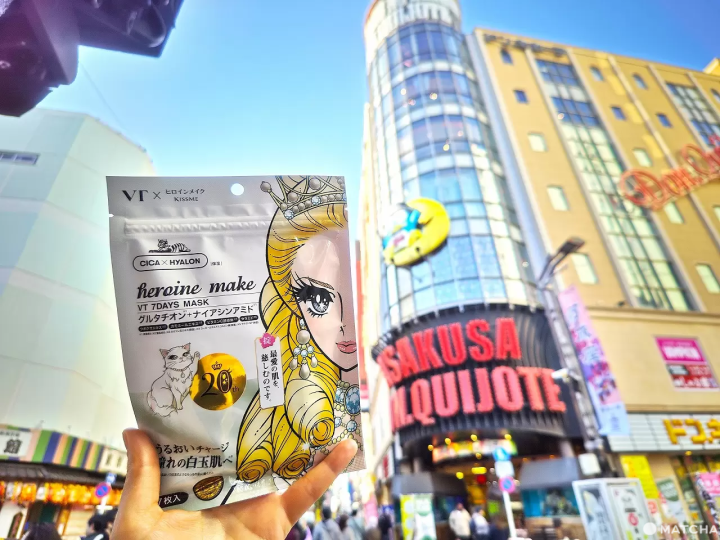
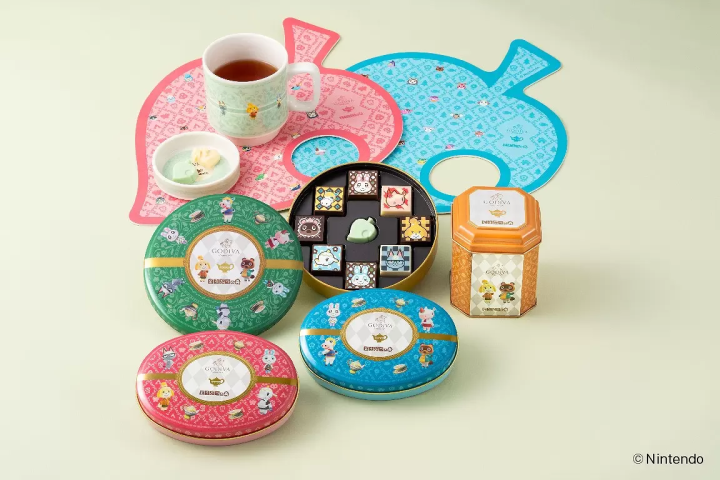
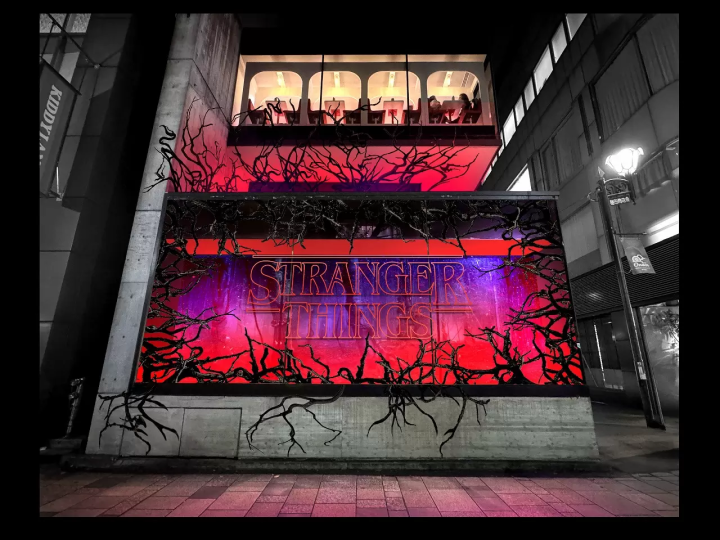
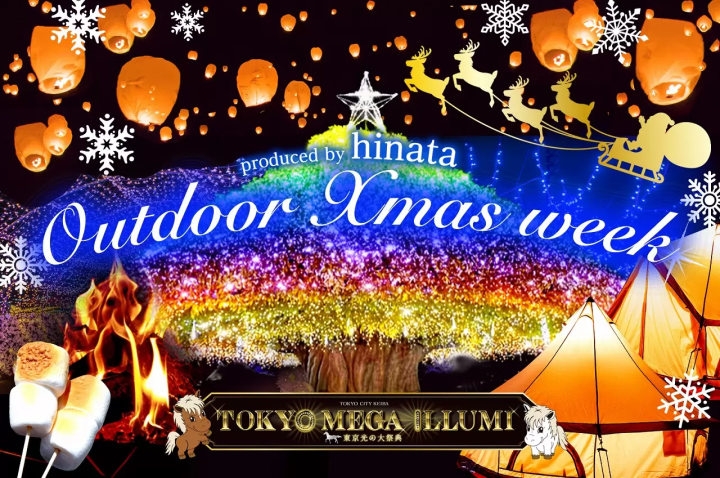






![[2026 Edition] FORMUAL 1 JAPANESE GRAND PRIX Information](https://resources.matcha-jp.com/resize/720x2000/2025/10/05-245984.webp)
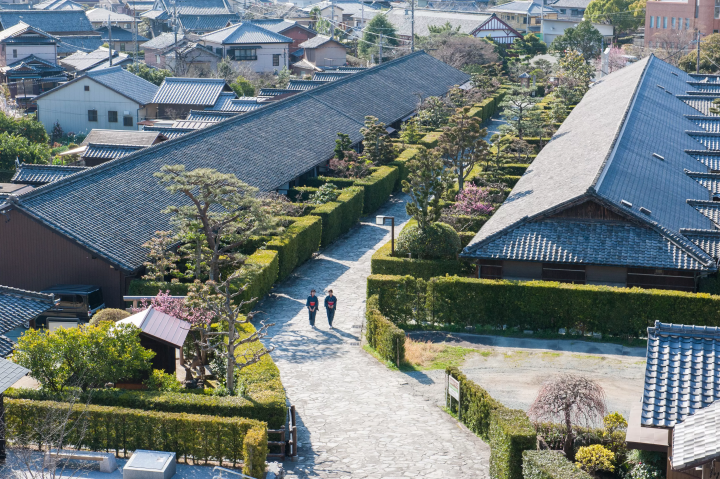

![[2025 Update] Namba's spectacular illuminations! "Namba Hikari Tabi" with approximately 1 million shining lights](https://resources.matcha-jp.com/resize/720x2000/2025/12/12-252825.webp)